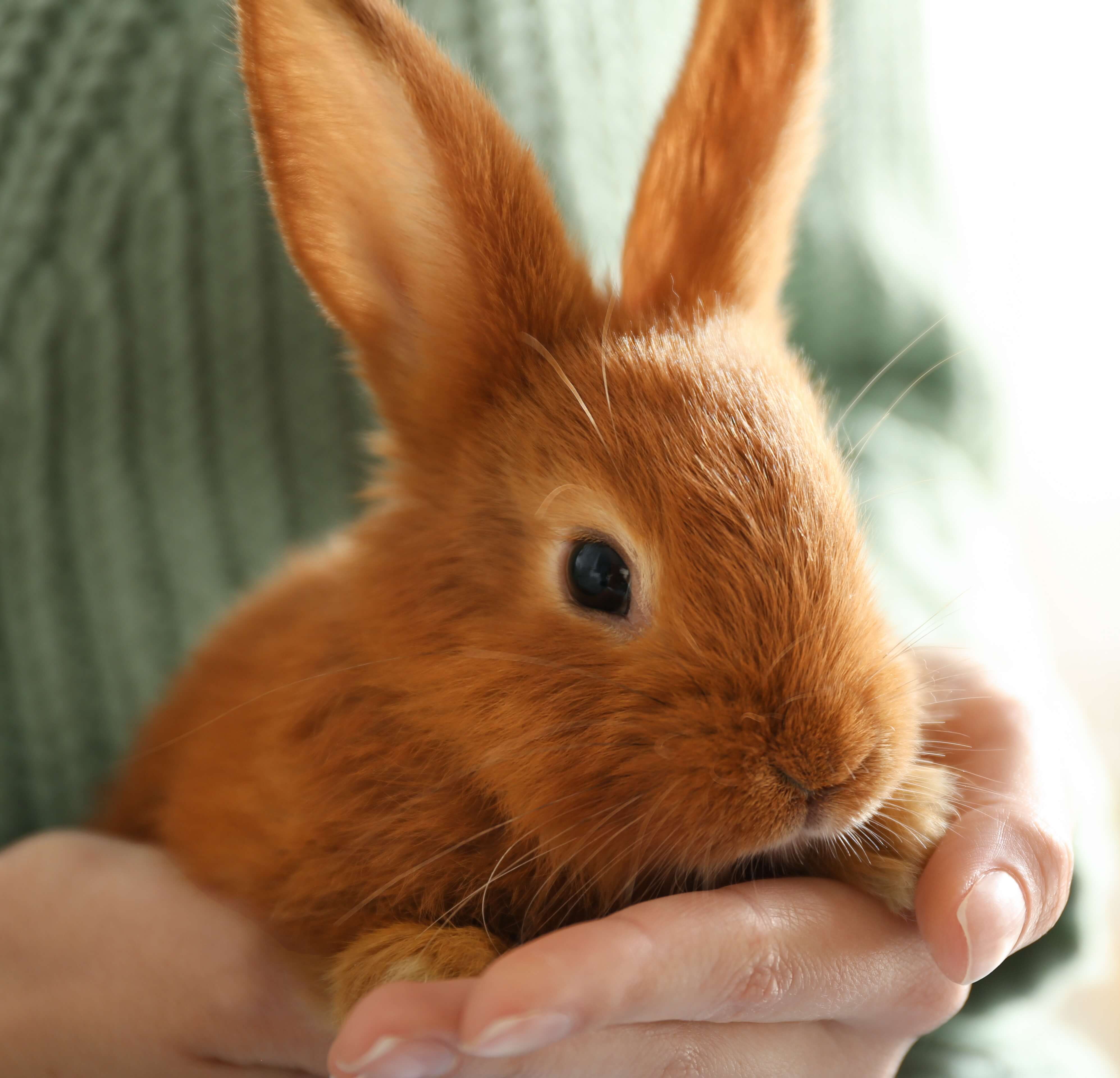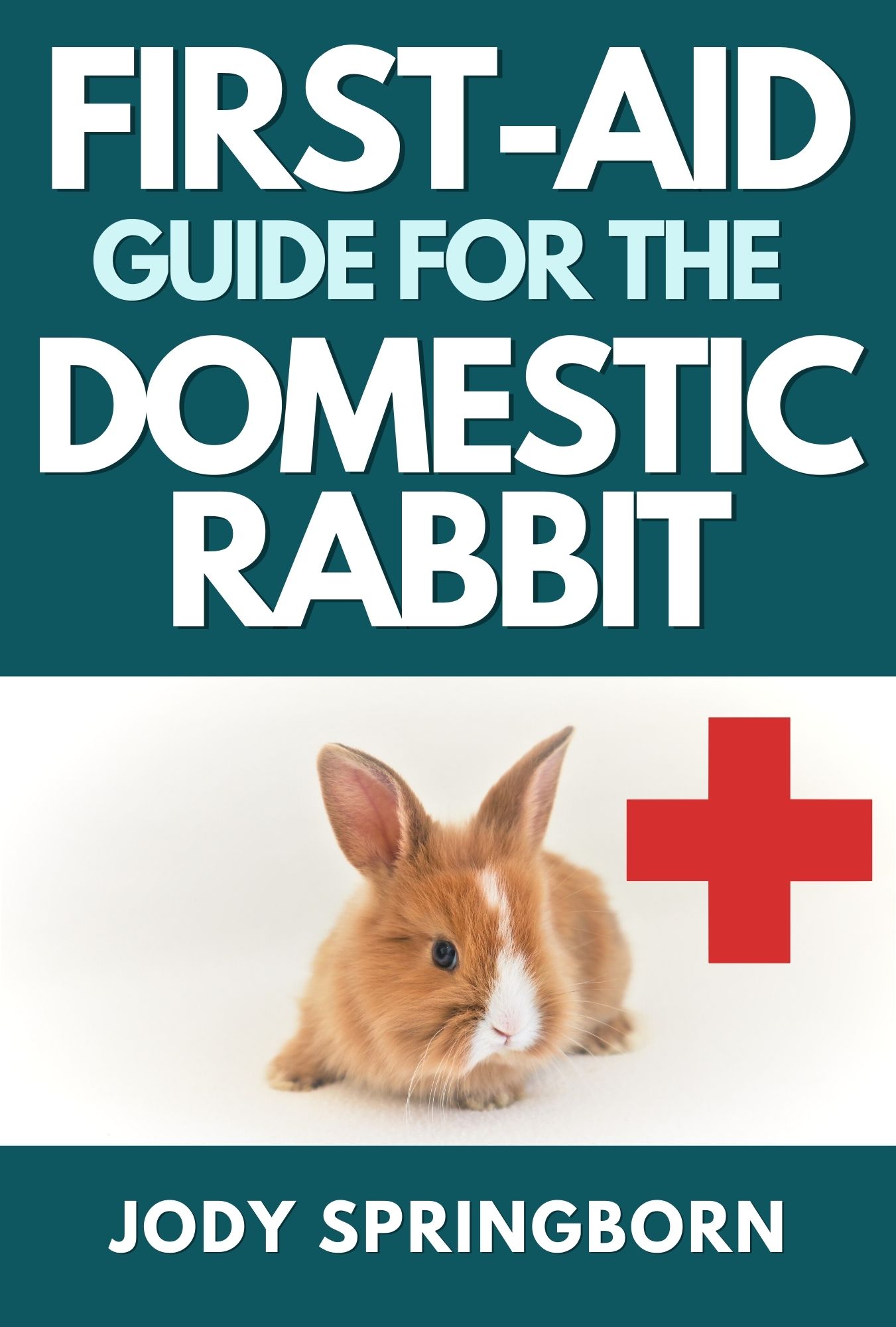- Home
- Traveling With Rabbits
Traveling With Rabbits
 Photo by Daniel Duchon
Photo by Daniel DuchonTraveling Long Distances
Traveling with rabbits is sometimes a necessity. There are a few things to keep in mind as you prepare for your trip.
If you are leaving town for the weekend or on a short vacation, I would minimize stress and consider either having someone who is knowledgeable about rabbits pet sit them or have them boarded at a rabbit-friendly facility. However, there are times in which people are faced with moving to another city or overseas. This kind of travel is stressful for both rabbits and owners, but it can be done.
Moving? In my time working in rescue, I have met people and rabbits who have traveled great distances. Some have immigrated from Europe and Japan. Other bunnies arrived from different states - some were frequent flyers, while others accompanied their owners to visit relatives in nearby cities on a regular basis.
If you find yourself moving to a different city (or country), don't automatically assume you need to rehome your bunny. Getting a new family or entering a shelter will be much more stressful on your bunny than just coming with you.
Traveling By Car
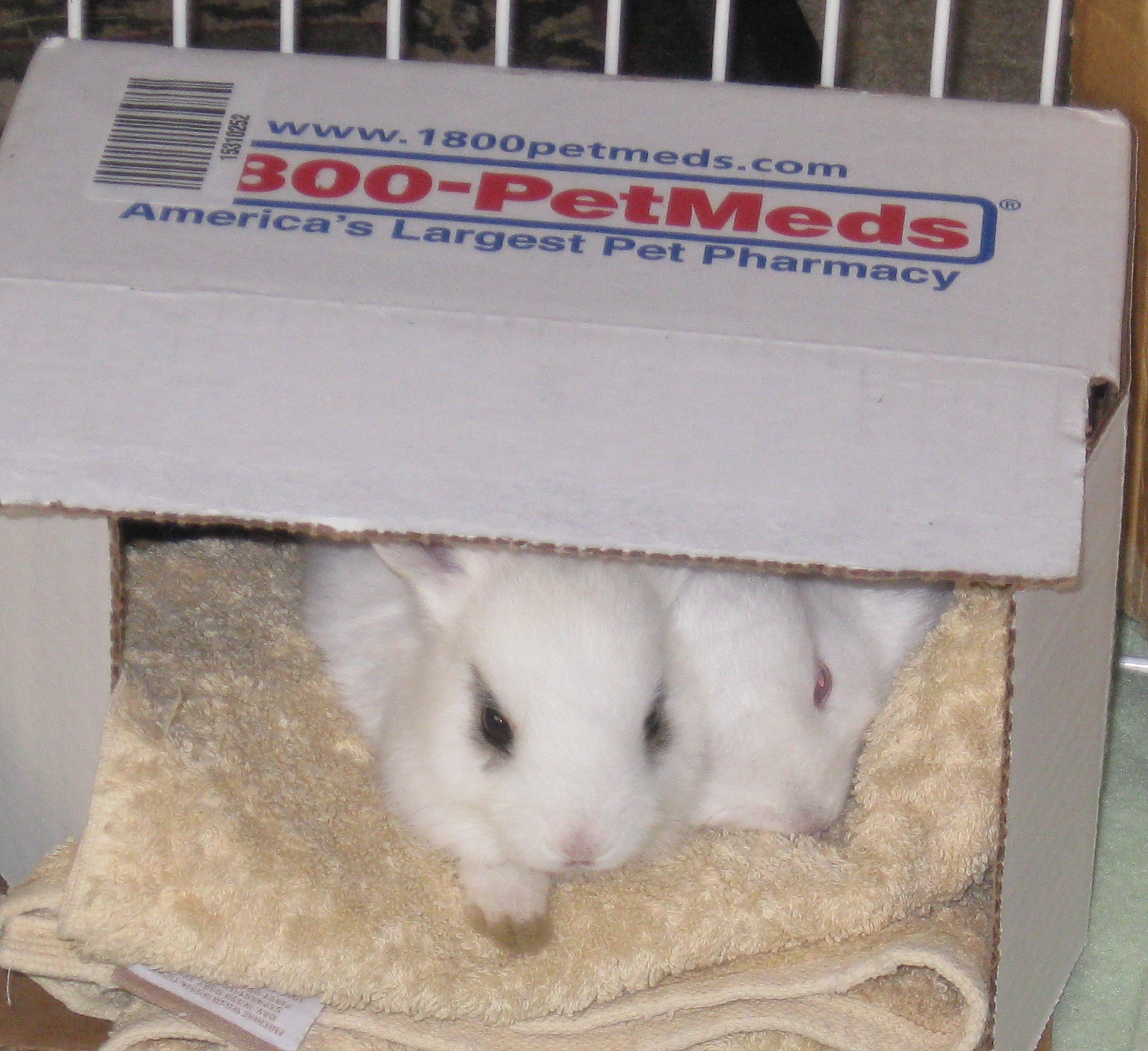 Baby Cupcake and Sprinkles. No bunnies were ever shipped.
Baby Cupcake and Sprinkles. No bunnies were ever shipped.Traveling with rabbits is not a good time to be spontaneous. Calculate where you are going to stop at every leg of your trip. Look for hotels or motels that accept pets. Most importantly, find out where the nearest exotics vet (and emergency vet) is located at your stop. When you are looking up emergency vets, find out beforehand if they see rabbits (as many don’t). This sort of research is something you don’t want to do in the middle of a crisis.
Try to establish a routine during your trip - driving, rest stops, exercise and lunch/dinner/snack at consistent times. Be aware that rabbits may be too stressed to eat or drink during the trip. Keep an eye on them and check for poop, as the lack of poop may indicate the need to see a vet. When you stop for the night, you may need to syringe-feed some Critical Care. Serving fresh, wet veggies will help keep them hydrated, but you may need to supplement with fluids (Pedialyte or Lacated Ringer Solution). Pedialyte is found in grocery and drug stores nationwide. While you syringe-feed Pedialyte, Lacated Ringer Solution is bagged fluids that need to be administered sub-q. This is available prescription only from your vet.
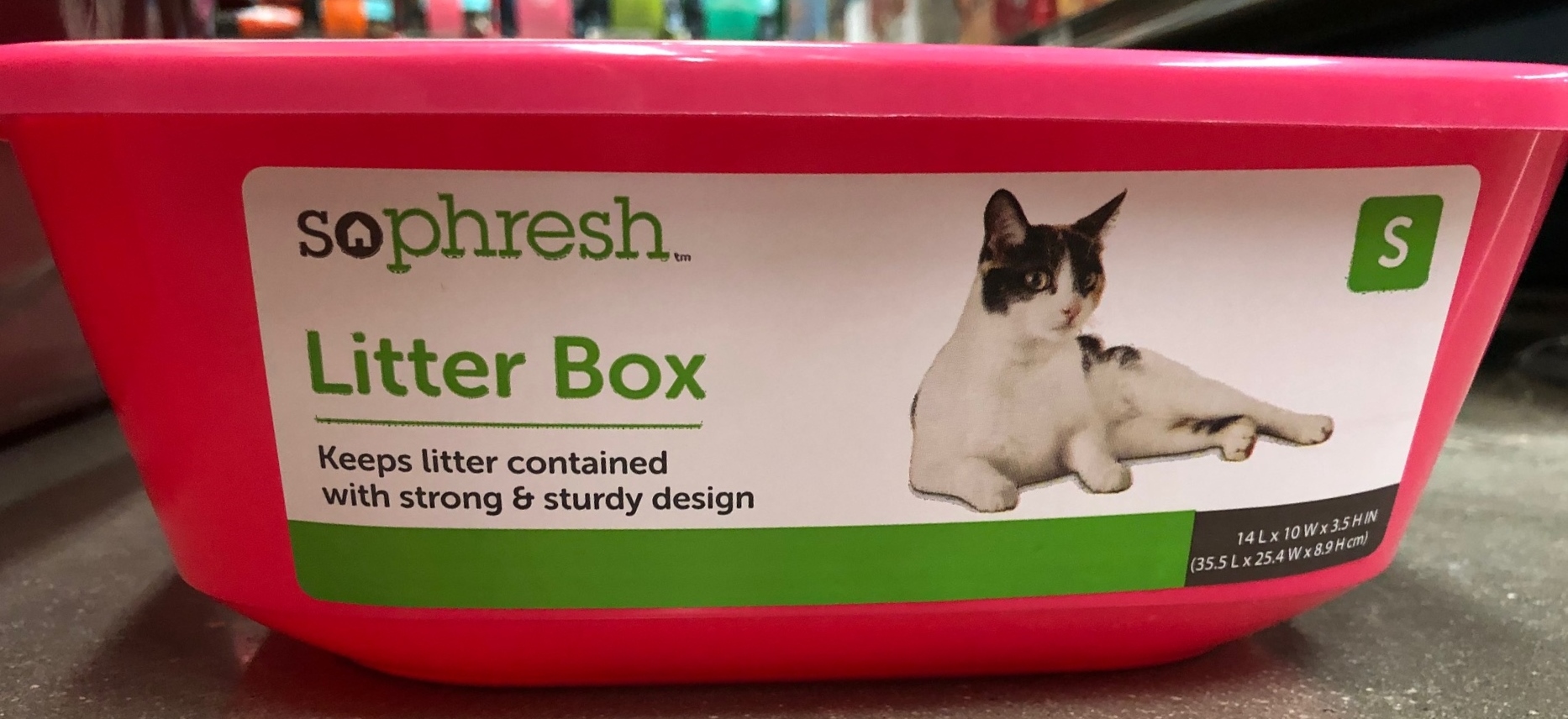
If your trip will take you several hours (or days), I would get a carrier big enough to fit a small litter box and affix a water bottle (and small dish for pellets and/or treats). A bigger carrier will allow the bunny an opportunity to stretch out or move around.
Keep the following supplies with you in the car.
- Water (If you are traveling several hours or days, I would set up a water bottle. If the floor of the carrier gets wet, have a set of towels ready to switch out.)
- Hay
- Food (I would offer some very wet veggies. I wouldn't expect the bunnies to drink a lot of water - if at all - during the trip. Wet veggies will help keep them hydrated.)
- Towels or pee pads.
- Cleaning supplies (garbage bags, rubber gloves, paper towels, vinegar, broom and dustpan).
- Ice packs or frozen water bottles (especially if you are traveling in the heat of summer and/or your car doesn't have air conditioning), as bunnies easily overheat and leaning against the ice packs or bottles will help them keep cool.
- Any medications.
- Emergency medical supplies: Critical Care, Lactated Ringer Solution (along with taxi and needles - prescription only), Pedialyte (if you do not have Lactated Ringer Solution), simethicone (baby gas drops), feeding syringes, heating pad, thermometer, Metacam (prescription pain medication).
- Exercise pen with clips to close it.
- Emergency contact numbers and instructions in your wallet or purse, in case you get in an accident.
- If you are crossing borders, you may need a health certificate from your vet. Check your destination for specific requirements and see if they will quarantine any animals entering.
- Use a Sharpie to write in the name and phone number of an emergency contact in the ear of the bunny. A Sharpie is non-toxic and will eventually rub off in a week or two. However, during the trip, it provides an emergency contact.
Traveling By Air
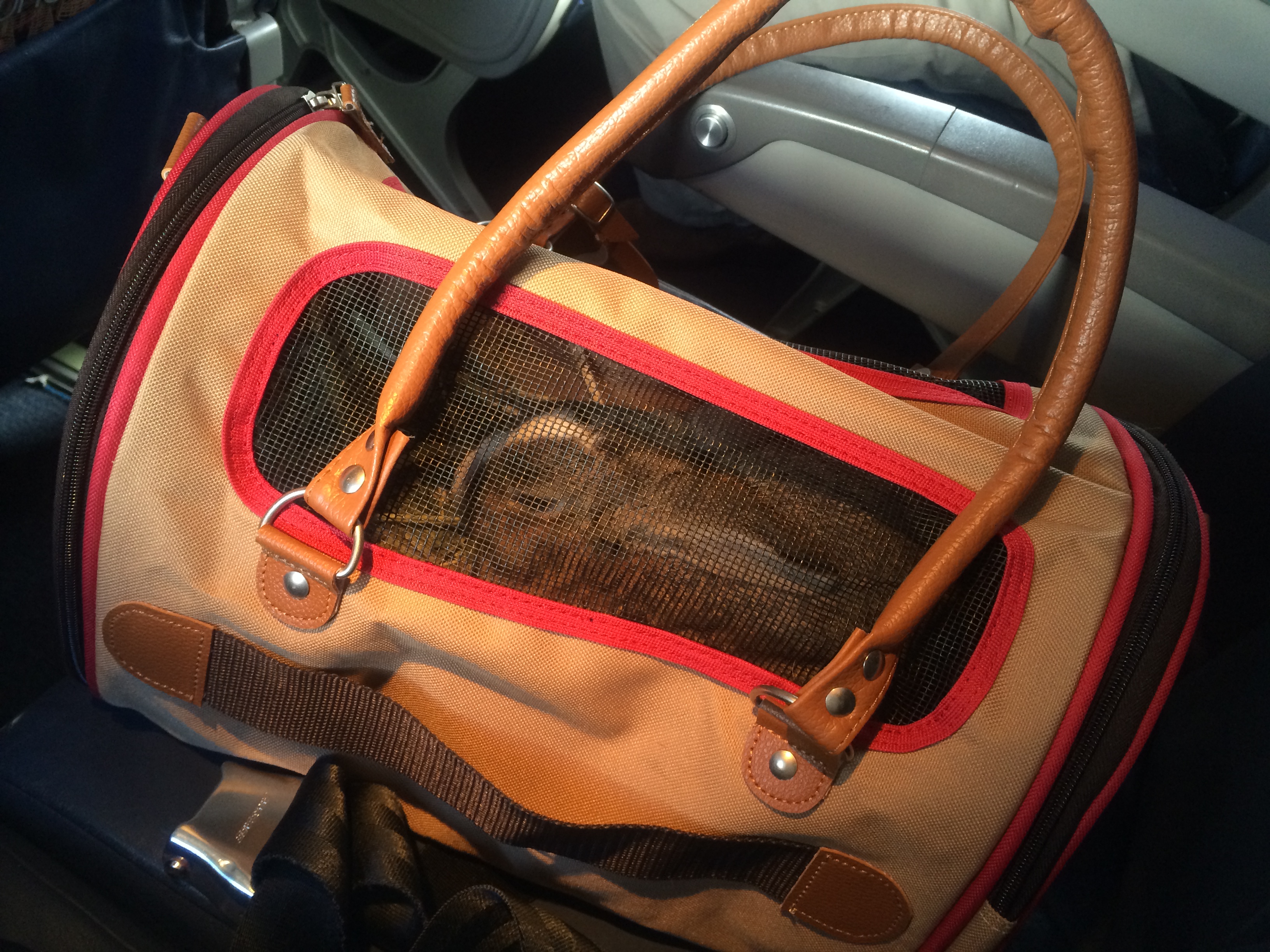 Porter flying cross-country to his new Forever Home.
Porter flying cross-country to his new Forever Home.Air travel is stressful for people, so it’s not surprising if pets are not fond of it, either. Some airlines will allow rabbits to fly in-cabin with you, in cargo or as checked baggage, but not all. Please check with airlines directly regarding their current pet policy.
There may be restrictions (such as no live animals in cargo during the summer). Common restrictions include how many animals are allowed in cabin in any one flight, the size of the kennel and the type of pet (more applicable to birds and short-faced dogs than rabbits). You typically need to contact the airline directly to book and pay the pet fee. Make sure you check the information on the ticket and print out the confirmation. Mix ups at the airport are common, so be prepared for the worst. If you have more than one stop, check with each carrier as not every airline has the same policy. If you are flying overseas, check with your destination country for any requirements needed, such as health certificates or if there is a mandatory quarantine. It’s important to note some destinations, such as Queensland, Australia, have declared it illegal to own pet rabbits. For more information on traveling with pets, see the USDA.
Carriers Done by the Book
 Proper in-cabin travel size for United at the time I needed to transport Porter in 2015. Recently, United changed their rules and pets are no longer allowed to fly in-cabin.
Proper in-cabin travel size for United at the time I needed to transport Porter in 2015. Recently, United changed their rules and pets are no longer allowed to fly in-cabin.If your bunny is flying with you in-cabin, I would purchase a soft-sided carrier that matches the maximum requirements allowed by the airline you are flying with. These measurements are important because the carrier must be able to slide under the seat in front of you. A hard-sided carrier is very unforgiving, so if you happen to be a half-inch too long or wide, you will not be able to make it fit and your bunny will be forced to fly cargo.
Feeding and giving water will be difficult, if not impossible, so prepare the carrier the best you can. When I flew Porter across the United States, I placed a towel on the bottom and then covered it with hay. On the morning of our flight, I gave Porter some sub-q fluids and placed some wet veggies in his carrier. We had one stop over in which I could slip him some treats and a small bowl of water. As expected, Porter knocked over the bowl, so be prepared for a possible mess.
Important! One consideration you should expect when taking your rabbit in-cabin: You will need to go through security. This means you will need to take your bunny out, hold him while you walk through the metal detector and then have a TSA agent wand you. Although this is a short process, make sure you have a firm hold on your bunny. The last thing you need is the airport to shut down as you chase down your rabbit throughout the terminal.
Traveling in Cargo
Most people dread transporting their bunnies in cargo. Unfortunately, this is the only method allowed if you are flying overseas (unless you have a celebrity bun and are flying First Class).
If you need to fly your bunny as checked baggage or cargo, again contact the carrier for exact details and requirements. Here, your animals will need to be housed in a large enough carrier to be able to move about. The carrier needs to be hard-sided, chew-proof, with a metal door (you may even be required to purchase a specific crate). It should either be collapsible or assembled with metal hardware (not plastic). You will not be able to use a soft-sided carrier, at all. You should be able to put in a towel, plenty of hay, a water bottle, (make sure the bottle does not leak) and a small litter box. Double check that you have any required paperwork and have the carrier or crate labeled appropriately. Here again, I would give my rabbits wet veggies and sub-q fluids prior to the flight so they remain properly hydrated, even if they don't drink any water.
Keep in mind extremes in temperature. There may be heat or cold restrictions, so it is important to check with the airline before booking your trip. Some airlines will prohibit transporting animals as checked baggage or cargo if there is a possibility a plane could sit on a hot or freezing tarmac for an extended length of time. Even if there are no restrictions, it is best to plan your trip for earlier in the morning or later in the evening in the summer and midday during the winter.
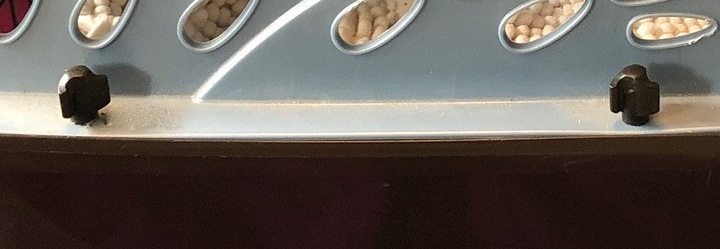 This carrier is held together by metal screws rather than plastic clips or screws. It's much easier for plastic clips to come off by accident.
This carrier is held together by metal screws rather than plastic clips or screws. It's much easier for plastic clips to come off by accident.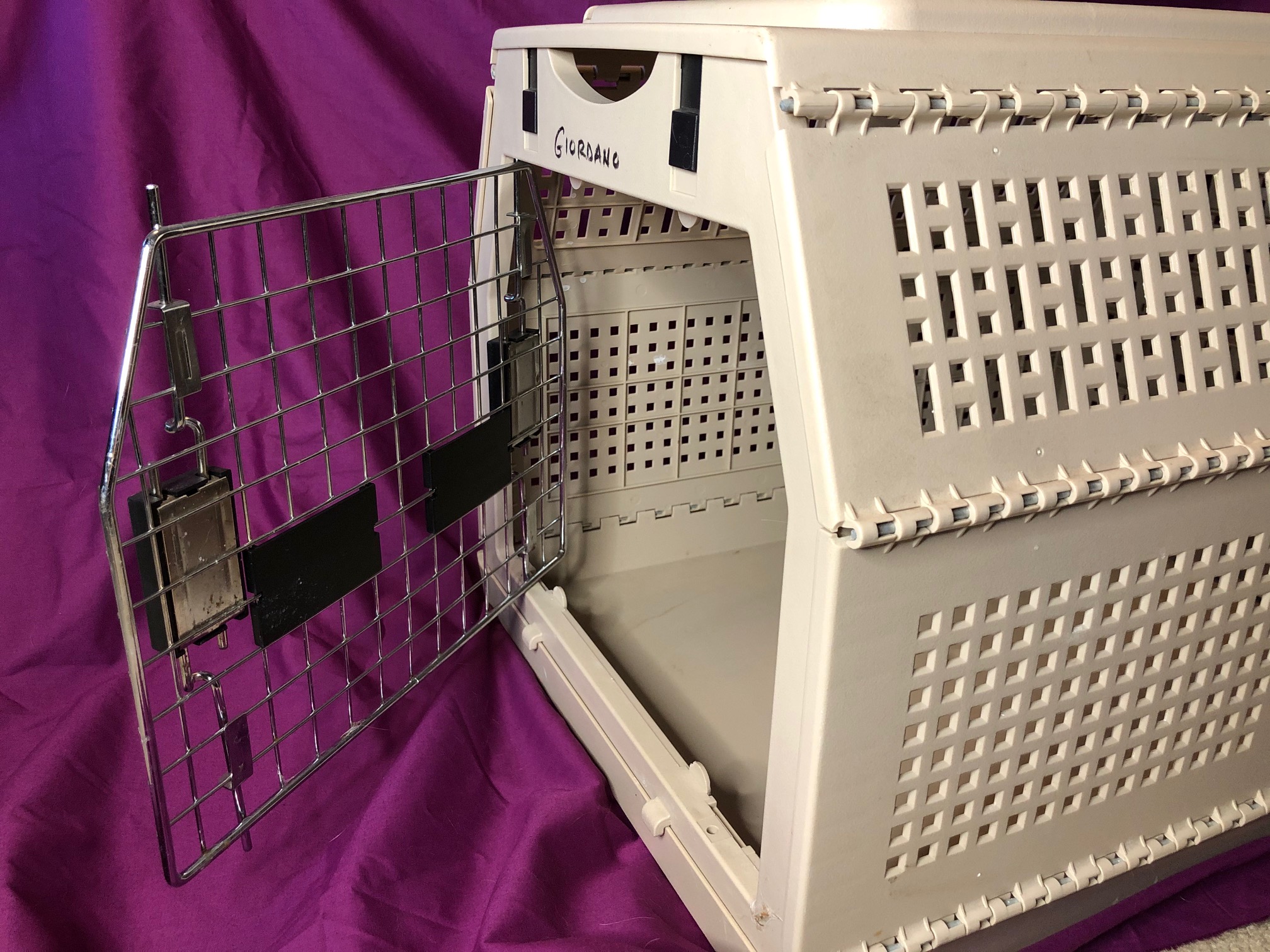 This metal carrier is collapsible, making storage easier.
This metal carrier is collapsible, making storage easier.Once You Reach Your Destination
Unpack and set-up a routine as quickly as possible. Be aware that in a new environment, rabbits will explore their new territory and mark everything. That means there will be more poop - and possibly urine (they may also spray) - outside the litter box. The territorial marking can last 2-4 weeks before the bunny is confident the Universe is aware of him and his territory.
If your bunny is free-range, limit the roaming until you have moved in all the furniture and have adequately bunny-proofed everything. This is more to keep the bunny from being underfoot (which we all know is a favorite past-time). If poop and urine outside the litter box is a problem, you can “retrain” your rabbit by limiting the space and putting down multiple boxes. Once he picks a box, you can take the other ones away.
It may take some time for your bunny to feel comfortable again. It may be just a few days or it may take several weeks. If your bunny is extremely stressed, I would also consider covering his pen with a sheet. This mimics a burrow and gives the bunny a feeling of security. I would leave it completely covered for a few days. As your bunny relaxes, you can lift a section of the sheet from a corner, to half a pen, to completely off.
If you need to assemble your furniture, I would try to limit any hammering or drilling (or in my case, swearing) away from your bunnies.










